#Timucua People
Text
Timucuan Indians are the Tamerikhans
Timucuan Indians are the Tamerikhans
Timucuan Indians are the copper colored or swarthy Tamerikhans (Tameri-Khans) depicted on the 1657 map of La floridas which has the Nationality of Tamerikaans listed under the plaque of La Floridas on this map.
Additionally, Timucuan are Tamerikhan are etymologically and phonetically the same word due to similar spelling and similar pronunciation. However, let’s break it down even further…

View On WordPress
#Abyssinia#Ancient Cush#Ancient Ethiopia#Assyria#Assyrian Empire#Ethiopia Superior#Gothic Architecture#History of Jacksonville#Iberian Peninsula#La floridas#Nineveh#Old World Florida#Picts#Prester John#Saint Augustine Florida#Saint Thomas#Tameri#The Fountain of Youth#the Garden of Eden#Timucua People#Timucuan Indians
6 notes
·
View notes
Text
“When Spanish colonizers arrived in the 16th century, Timucua was the most widely spoken language in large swaths of Florida and George. Within two centuries, its speakers had all been enslaved, felled by disease or absorbed into other language groups.”
Today, two scholars are working to decipher the grammar of Timucua using bilingual colonial manuscripts.
This project is especially important because Timucua is a language isolate, meaning it’s not related to any other language we know of. So it has the potential to teach us things about language that no other language can.
Follow for all the latest news and research on language and linguistics!
#Native #NativeAmerican #linguistics #colonialism #history #language #Timucua
103 notes
·
View notes
Text

This is a summary (and maybe slight critique) of LGBTQ America: A Theme Study of Lesbian, Gay, Bisexual, Transgender and Queer History—chapter 09. Sexual and Gender Diversity in Native America and the Pacific Islands by Will Roscoe.
This piece is interesting as the theme study was published by the National Park Foundation and the National Park Service. (Connections can be made to the history of parks as places of constructing heteromasculinity and heteronormativity as well as their role in colonialism, but also the historic presence of queerness in rural places. )
This chapter discusses the significant diversity in gender roles, sexualities and identities among the indigenous peoples of ‘the united states’ though in my writing I would refer to the land, at least when discussing the land prior to colonialism, as Turtle Island.
Two Spirits in Native Tradition: Roles, Genders, Identities and Diversity
Roscoe chooses to begin the story from the perspective of a French colonizer whose intentions were to claim land for the French in what is now called Florida. His party is lost and tired and is saved by a Native who was probably from the Timucua people (09-2). This person gave the colonizers water and was described as, “an Indian woman of tall stature, which also was an Hermaphrodite” and later he encountered another ‘hermaphrodite’ serving as an emissary of a Timucuan king.
“The multiplicity of gender and sexuality among native peoples was noted as early as 1540 along the Colorado River by Alarcon, in the 1770s in Hawai’I by Cook’s third expedition and in the same decade by Russian explorers in Alaska” (09-3). By being noticed, these gender diverse people had become targets for colonial violence. Such as when in 1513, “Vasco Nunez de Balboa had forty-two spirits in Panama thrown to his dogs” (09-3). I want to pause and be genuinely horrified and to feel sorrow for these people whose ‘crime’ was being different from what the colonists in their fucked-up worldview, knew.
Hermaphrodite is a term that was used by Europeans and other colonists to describe native people they encountered who appeared to be crossing or mixing genders. For the Europeans from this time, the term hermaphrodite “could indicate intersexuality, androgyny, or homosexuality” (09-4). In reality, “the sheer diversity of Native American and Pacific Island cultures makes the use of any umbrella term problematic” (09-3).
But colonists did often use other terms such as ‘sodomites’ and berdache—the latter of which became a ‘frontier’ term (used between colonists and Natives) to identify a social role among various tribes (09-4). The actual origins of the term linguistically are quite old but are not Native and was largely defined as a “younger or subordinate partner in a male homosexual relationship” (09-4).
#queer history#transphobia#erotophobia#colonialism#Timucua#two-spirits /#gender variation#social construction of gender#heteronormativity#queer theory
16 notes
·
View notes
Text
Swamp Witch Travels: Rainbow Springs


History
Rainbow Springs’ first human visitors probably came upon her waters well over 10,000 years ago in the form of paleo-indigenous groups. Moving further along, the Timucua and their neighbors used this spring, like many others for fishing, travel and funerary rites. After colonization, the area surrounding the spring was used for phosphate mining into the 1930s. This is where much of the waterfalls on the property came from, made with byproduct of the mines. From here, it became a privately owned tourist attraction offering many of the same draws as Silver Springs, like glass bottom boats, submarines and of course a dip in the ‘Healing Waters’. In 1990, the State acquired it, creating the park we have today. Its a first magnitude spring, and the fourth largest in the state. Like many springs, it was formed from a sinkhole around 14,000 years ago and freshwater bubbles up from it continuously.
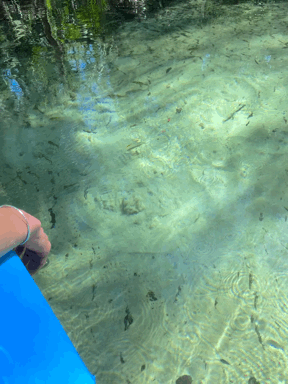
Agua Dulce
Springs have always had a connection to the Indigenous peoples of the area. In the Caribbean, we find amongst the syncretic systems the concept of a group of spirits known by some as the Division of Agua Dulce, which literally translates to Sweet Water. This group of spirits is comprised of Indigenous ancestors who were from the Caribbean or transported there during colonial times. Some of the spirits are fallen heroes, past Caciques, or the Cemí and other Land spirits these ancestors have relationships with. Some of the Spirits in this division I venerate and work with are Atabey, the Supreme Creatrix and Water Mother, and Anacaono, a female Cacique from Ayiti (Haiti) who led a Taino Rebellion in the 16th Century. Within the practices of this division, we see that Springs are held as places of high spiritual importance, and are a direct connection to our ancestors, as their spirit is literally embedded in the Sweet Waters rising from the Spring. The word ‘canoe’ actually comes from the Taíno (kanoa). In espiritismo, one metaphor for the Bóveda I have heard is that it is your own personal Spring of spiritual energy and wisdom, deepening the importance of springs in my practice.
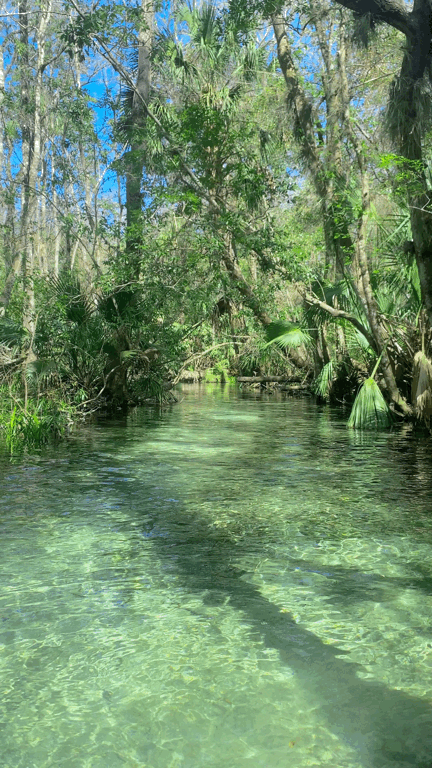
Springs in Praxis
When I visit any park, I always leave an offering by a tree upon entering. I believe in the notion of paying one to pay them all. This is usually tobacco and some coins, accompanied by a prayer. However, when I go to a River or Spring, I find it imperative to also make an offering to the Water itself. This allows me safe entry, and occasionally even some guidance and protection. Like many water spirits, shiny coins and singing make nice offerings to the Springs. Its always good practice to clean up trash and be respectful to the workers and environment. You should always ask permission and make an offering if you plan on collecting anything, as otherwise it may not lend you the virtues you are seeking. When I visit a Spring, I always fully submerge myself - baptism style - to cleanse and receive the healing and blessings of the spring. I also will collect some of the water if I need to use as an offering to certain spirits, as well as for spellwork. I empower the water to either call on the spring itself or for virtues of healing, renewal and growth. I have also heard of friends using the water for prophetic dreams and divination work, citing the connection to spiritual development in espiritismo.
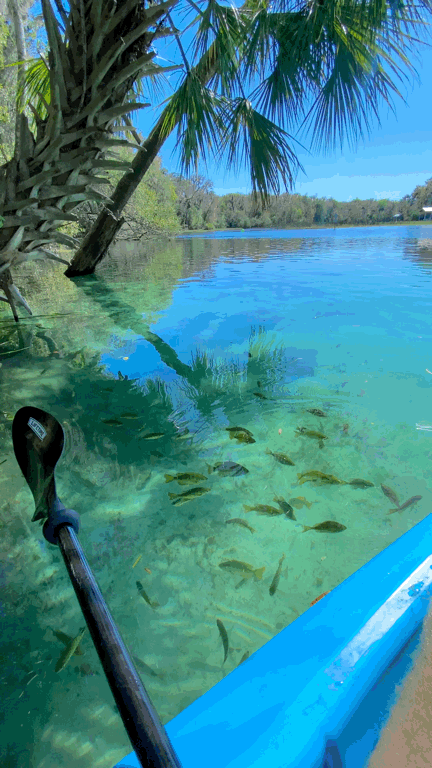
Springs for Tomorrow
Many springs today are suffering various ecological problems, most of which are directly caused by humans. The best spiritual practice is to learn how to act in these sensitive environments, to prevent further degradation. I recommend the instagram @FloridaSpringsCouncil to learn more about the importance of our Springs and the issues plaguing them.
Bendiciones🕯️
#witchcraft#florida#bioregional animism#bruja#brujeria#florida witch#santeria#swamp witch#witch#traditional witchcraft#floridasprings#rainbowsprings#espiritismo#cuban#cubanfolkmagic#cuba
7 notes
·
View notes
Text
When Spanish colonizers arrived in the 16th century, Timucua was the most widely spoken language in large swaths of Florida and Georgia. Within two centuries, by the time of U.S. independence, its speakers had all been enslaved, felled by disease or absorbed into other language groups. Despite its diminishment, Timucua left a record—it was the first Native language within modern U.S. borders to be put into writing, albeit using the Roman alphabet. Rare book libraries hold Franciscan texts that display Spanish on one side and Timucua on the other. Most historians just read the Spanish side. But Dubcovsky wanted to know what the Timucua texts really said.
Since around 2000, Broadwell has been assembling the first comprehensive online Timucua dictionary, with the help of graduate students and computer programs that can search for patterns in grammar and meaning. Together, he and Dubcovsky have also made a number of startling new discoveries that challenge the usual narrative about how the Timucua language came to be written down.
3 notes
·
View notes
Text
First contact and Seloy
As said before, I don't think it's in FOY park, but I see why many do. I've been reading up on the first contact, and often times what pops up is the Timucua people, lead by Cacique Seloy.
Found out that the first fort was build over his main hut- totady that is Castillo de San Marcos, a couple of blocks south of FOY park, in the Spanish quarter.
Apparently, the verbiage of "first contact" concerning Seloy is something found in academia and museums. Since Byron (the author) was known to go to local museums and clearly had an interest in museums, I think this is where it came from.

0 notes
Text
Exploring the Hidden Signs of Orlando's Rich History
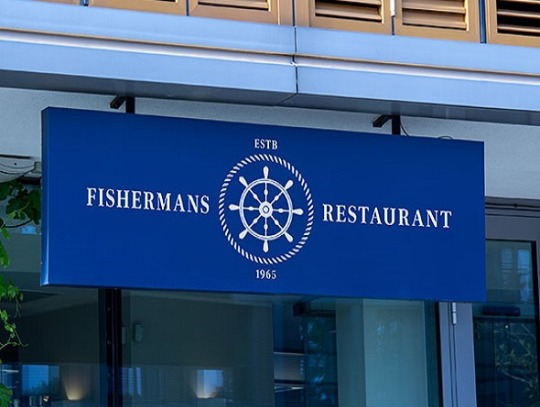
Orlando, Florida, is known worldwide as the ultimate family vacation destination, home to iconic theme parks like Walt Disney World and Universal Studios. However, beyond the glittering facades and thrilling rides, Orlando hides a treasure trove of historical signs that reveal its fascinating past. In this blog, we will embark on a journey to uncover the hidden signs of Orlando's rich history, shedding light on the city's diverse heritage, innovation, and resilience.
1. Signs of Indigenous Heritage
Before Orlando became a bustling metropolis, it was inhabited by indigenous peoples. To find signs of Orlando's indigenous history, look no further than the Timucua Indian Mounds. Located in the Lake County region, these mounds are tangible signs of the native Timucua tribe's presence in the area. While the mounds are a testament to their ancient culture, Orlando's modern-day Seminole Tribe continues to preserve their heritage, offering visitors glimpses of their traditions and history.
2. Signposts to Early Settlements
Orlando's roots as a European settlement trace back to the 19th century when it was a hub for cattle ranching and citrus groves. Signs of this era can be found in historic neighborhoods like Thornton Park, which boasts charming brick streets and well-preserved architecture. These neighborhoods are living signs of Orlando's evolution from a small agricultural town to a vibrant urban center.
3. Signs of Innovation and Progress
Orlando has played a pivotal role in shaping the modern world through its contributions to the field of aviation and space exploration. The Kennedy Space Center, just a short drive from Orlando, is a prime example. Its towering rockets and spacecraft are undeniable signs of human achievement, carrying our dreams of exploring the cosmos. Moreover, the nearby Cape Canaveral Air Force Station is another signpost of technological advancement and innovation.
4. Signs of Civil Rights Struggles
Orlando, like many cities in the United States, has witnessed its share of civil rights struggles. The Wells' Built Museum of African American History and Culture serves as an important signpost to the African American community's history and their fight for equality. The museum is located in the historic neighborhood of Parramore, which itself bears the signs of resilience and progress as it continues to evolve.
5. Signs of Natural Beauty
Orlando's history isn't just about human achievement; it's also deeply intertwined with the natural world. The clear, pristine waters of the Wekiva River and the lush beauty of the surrounding Wekiva Springs State Park are signs of Florida's untouched wilderness. These natural signs provide a stark contrast to the urban hustle and bustle and offer a glimpse into the region's ecological history.
6. Signs of Entertainment Culture
Orlando's entertainment industry has left an indelible mark on the city's history. While the theme parks are the most obvious signs of this influence, there are other, more hidden signs scattered throughout the city. For example, the former site of the iconic Rosie O'Grady's Good Time Emporium, a vaudeville-style cabaret, is a hidden sign of Orlando's entertainment heritage. Today, it serves as a testament to the city's ability to adapt and thrive in the ever-changing world of entertainment.
As we explore these signs of Orlando's rich history, it becomes evident that the city's story is one of diversity, resilience, and progress. The signs may be subtle, tucked away in quiet neighborhoods or displayed proudly in museums, but they all contribute to the tapestry of Orlando's past and present.
Conclusion
Orlando, Florida, is a city of many faces, and its history is equally multifaceted. By paying attention to the hidden signs of Orlando's rich history, we can gain a deeper appreciation for the city beyond its famous theme parks. From indigenous heritage to civil rights struggles, from natural beauty to technological innovation, these signs tell a story of a city that has evolved and thrived in the face of change. So, next time you visit Orlando, take a moment to seek out these signs and immerse yourself in the rich tapestry of history that makes this city truly unique. Orlando's history is waiting to be discovered, and its signs are ready to guide you on a fascinating journey through time.
1 note
·
View note
Text
0 notes
Text
Two Scholars Reveal Incredible Insights Into Floridian Natives Through Long-Lost Language Translations
Imagine a Classics department at a University where the historians never bothered to learn the Greek or Latin of the original texts and you’ll have some idea of what the study of North American antiquity has been like. Take for example Timucua, a dead language spoken by peoples native to Florida and Georgia, unrelated to
The post Two Scholars Reveal Incredible Insights Into Floridian Natives…
View On WordPress
0 notes
Text
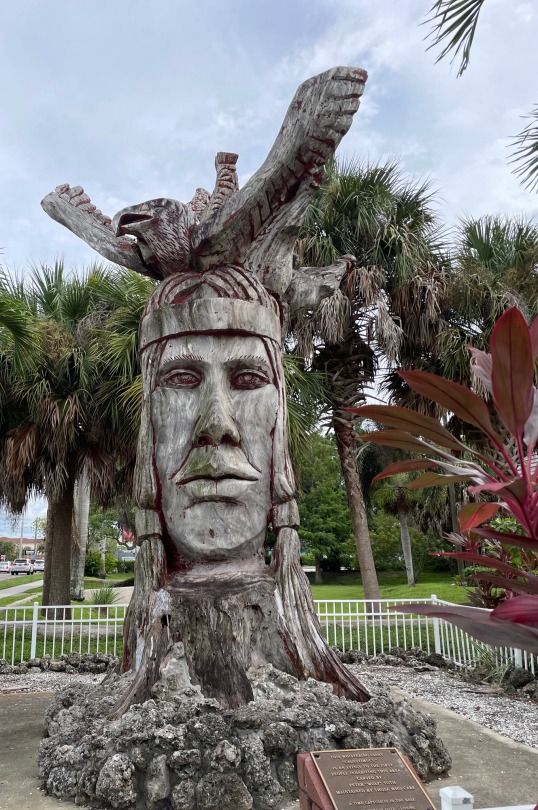
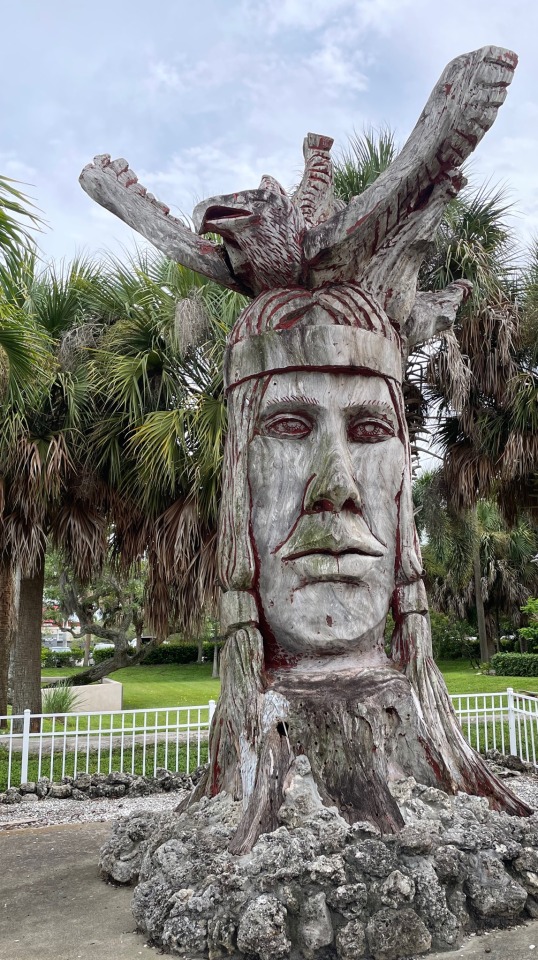
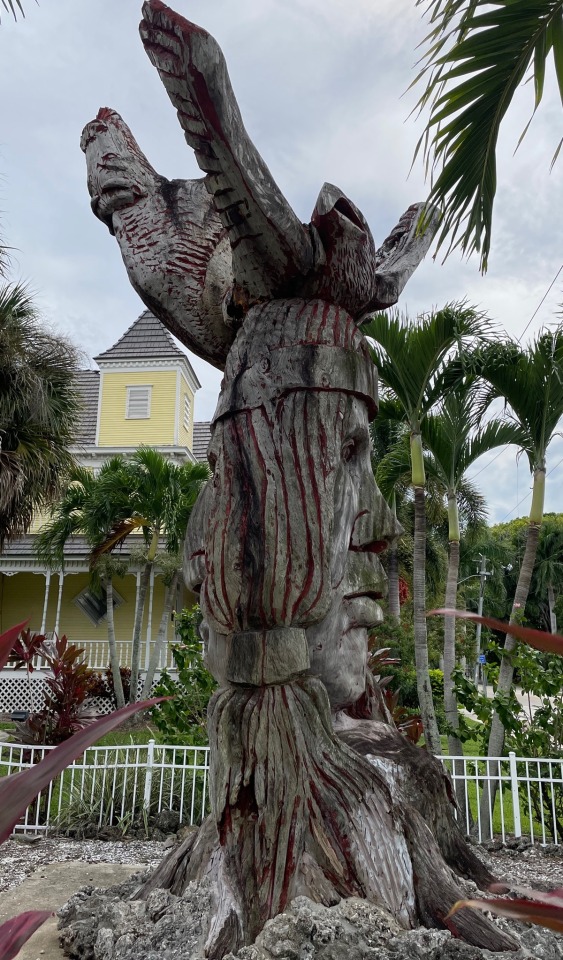
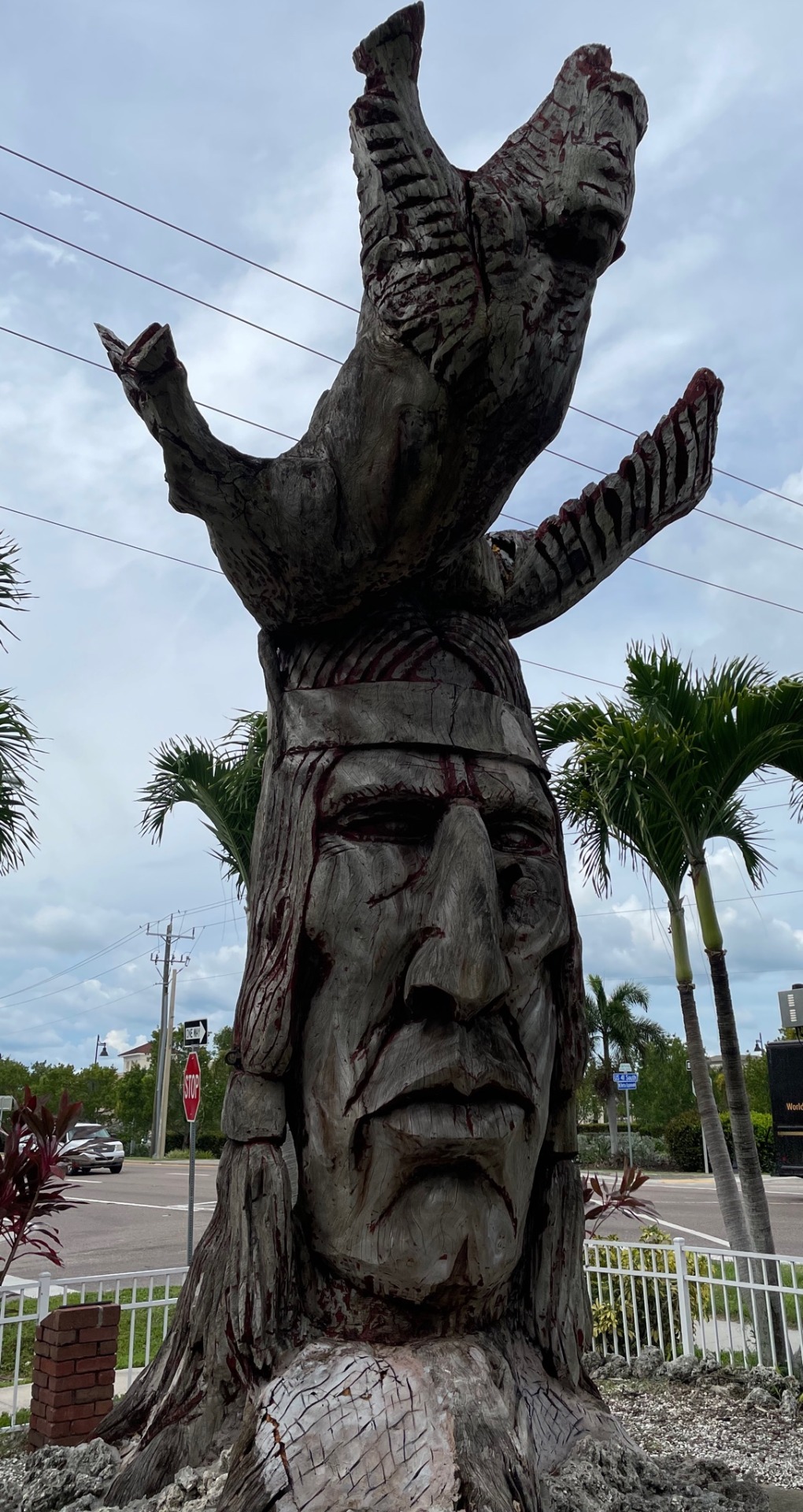
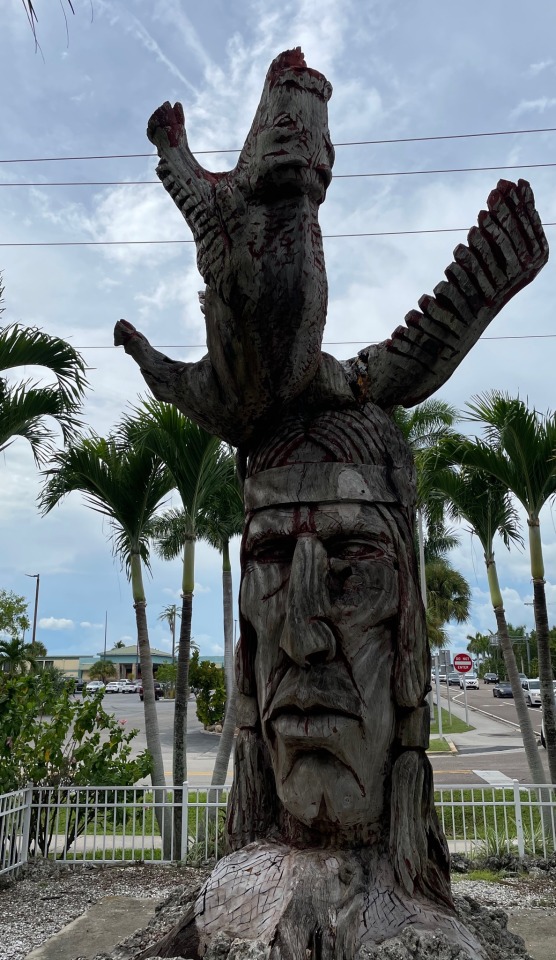
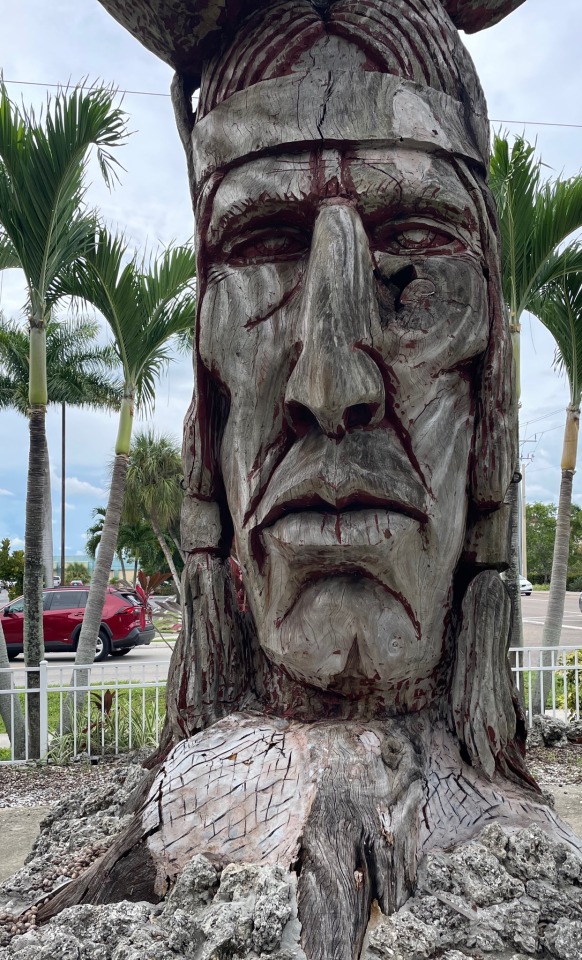

Calostimucu is a twenty-foot-tall statue carved in the round by Peter “Wolf” Toth. The fascinating story began in the seventies when Fred Babcock discovered a very large, dead monkey pod tree on his property overlooking the Charlotte Harbor in Southwest Florida. Fred Babcock had become aware of and impressed by, the sculpting talent of Peter “Wolf” Toth during a visit to La Jolla, California in 1972. La Jolla was the site where Toth had created his first massive sculpture of an Indian head. It was during his work on the cliff-carved stoned visage that he formulated his plan to shape a “Whispering Giant” Indian head in every state of the United States. Toth’s next stop was his “hometown” of Akron, Ohio where he elected to transition to sculpting in wood for the remainder of his series. Peter “Wolf” Toth was not born in Akron; his family fled Hungary in 1956 to escape Soviet occupation. Toth was captivated by the American Indians and sympathized with their mistreatment and oppression. He is quoted by Roadtrip America as explaining, “This (the statue) is my concept of the Indians of this area. I study the Indians of the area, then visualize an Indian within the log. It is a composite of all the native people of the state.” (Thurman 2010) Which perfectly mirrors what he achieved in Punta Gorda, FL.
Calostimucu is a composite of the Calusa and Timucua that were prevalent in this area prior to white expansion. Calostimucu is the tenth statue completed in Toth’s “Whispering Giant” campaign. It is unique in the dual nature of the round. It has two faces and two symbolic animals jutting from the crown. The face confronting all Southbound traffic on US 41 is that of a maiden. She looms, at twenty feet, stoic in the deep hewn lines bracketing her mouth with expressive deep-set eyes. She has a generous mouth situated above a squared jaw in an elongated face. Twin braids conceal her ears with an eagle positioned along the part in her hair. The eagle appears to be in distress: either falling from the sky or failing to gain flight. Opposite the maiden is the Chief. He strikes me as resigned in anger. The deep lines of his face and lips are emphasized by lingering red paint that has all but worn off the superficial exteriors of the monkey pod. I have attempted to capture what I found to be a compelling feature of the chief’s face. Toth chose to allow the natural grain of a burl to act as the undereye pad of Calostimucu’s male left eye. Knots in trees occur as branches are severed, or broken, from the living tree. The burl in the wood is a remnant of a lost limb, a scar, but also proof of the tree’s survival. I doubt that its inclusion was accidental. At the base of the figures are roots that Toth took pains to crosshatch, effectively concealing the wood’s grain. Juxtaposed on the opposed eye is a slash that draws further attention to the organic knot. The overall impression is of a man bruised and angry, calmly planning his next move. The animal form projecting from the Chief’s head is a buffalo. It is stationed on its back, clearly in distress, with four legs clawing at the sky. This corroborates the predicament of the eagle.
I grew up with this statue at the foot of Charlotte Harbor bridge. I remember waiting to see the Chief’s face as I crested the peak. I do not remember if I ever saw it covered in red paint. The reason that I chose this work is that it has always spoken to me. Whispering about rage and self-control. The property that Calostimucu originally stood on was severely damaged in Hurricane Charley. As the decision to relocate the statue was being considered in Charlotte County, there was a controversy concerning the composition of the figures that I had never considered. Citizens were disturbed by the buffalo’s anatomical correctness. I found the rank pettiness deeply offensive and had not been to visit my old friend since his face was turned away. I am extremely grateful to have had this incentive to revisit Calostimucu and am proud that it still remains. For me, Calostimucu epitomizes the community it resides in. Citizens appreciate the artistry and even some of the history. But they don’t want to look it full in the face. They prefer to turn away and pretend that something obvious, true, and essential isn’t there.
Thurman, G. (2010, October). Sculpture by peter wolf toth in winslow, arizona. Peter Toth sculpture in Winslow, Arizona. Retrieved September 17, 2022, from https://www.roadtripamerica.com/roadside/Peter-Wolf-Toth.htm
1 note
·
View note
Text
Mud river spring

#Mud river spring full#
Visit the Welaka State Forest website for more information.Experience the freedom of Weeki Wachee River most scenic areas while being your own captain on your own boat. Plan for at least 2 hours if you are just doing the trail loop, more for swimmingĬamp restrooms available at the spring itself 1 mile south of the National Fish Hatchery Public Aquarium, on the right Visit the Welaka National Fish Hatchery’s website. Plan to spend at least 15-30 minutes there. Johns River not many people know about! Welaka National Fish Hatchery Public Aquarium Families of all sizes and ages will find something they love about these places the little sightseers, hikers, swimmers, and explorers in your life will be able to experience the beautiful places along the St.
#Mud river spring full#
(I recommend getting to the park early in the day during the weekends – while it doesn’t get “crowded” per se, the small spring itself is a big draw for locals in the summertime.)Ī full day of low-cost, high-adventure fun can be had within a mile along CR 309 in Welaka, FL. Deer, gopher tortoises, snakes, and birds of all shapes and sizes can be seen along the Mud Springs trail (a flat 1.75-mile loop), as well as Florida’s typical vast array of flowers and trees. In my childhood, the spring was closed to swimmers for ecosystem restoration, but today it’s a popular local spot to cool off in the summer on the weekends. The small spring pumps out nearly 14,000 gallons per hour of clear spring water into a half-mile spring run that flows into the St. It has something for hikers and swimmers alike – a well-maintained trail that winds its way through beautiful pine flatwoods and oak hammocks and a small glistening spring at the end for swimming. Mud Springs, located south of the hatchery in the Welaka State Forest, is a fantastic place to spend an afternoon with your family in the Florida wilderness – the parking and day use fee is only $2 per person. If you have little bird watchers in your brood, this is a great place to spend some time. About a mile from the aquarium you can find the “Beecher Unit”, which houses a bird observation deck and a half-mile loop trail through the nearby woods. As a child I was enthralled by the place, and to this day I make a point to swing by to see what the fish are up to!īetween the aquarium and Mud Springs, you can see the rest of the hatchery facility – medium sized ponds on either side of CR 309. While the facility itself has not changed much in my lifetime, although they rotate out fish and other species, it is still great fun to see and learn about what swims beneath the surface of our spectacular river. Developed in 1926, this 16-tank aquarium houses a wide variety of fish and other aquatic creatures that call the St. daily (no entrance fee), the National Fish Hatchery aquarium is a tiny but entertaining stop at the beginning of your day. Among them, the National Fish Hatchery public aquarium and Mud Spring Trail in the Welaka State Forest are two of my favorites that I regularly visit to this day. Located along CR 309 in Putnam County, there are quite a few gems in this area that enthralled me when I was a little. From the Timucua to William Bartram to today’s anglers and outdoor adventurers, humans have been drawn to this unique spot on the St. Welaka is a small town just south of Palatka (about 30 minutes or so). One of my favorite spots, however, is a place you may have never heard about: Welaka. There are 310 miles of possibilities with springs, museums, hikes, boat trips, and everything in between. Johns River abounds with opportunities for fun and adventure for kids.

0 notes
Text
god DAMN it is hard to find information about indigenous peoples of the southeastern united states. if anybody has good resources on the appalachee, timucua, or choctaw peoples, or other tribes native to the south, especially florida, georgia, and alabama, i’d really appreciate it
i’m especially looking for information re: their traditional architecture, clothing, and food
81 notes
·
View notes
Text
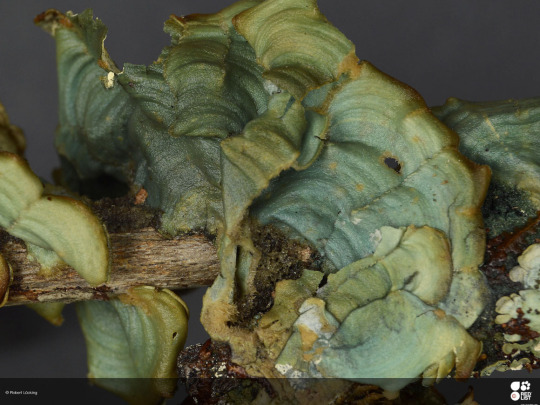
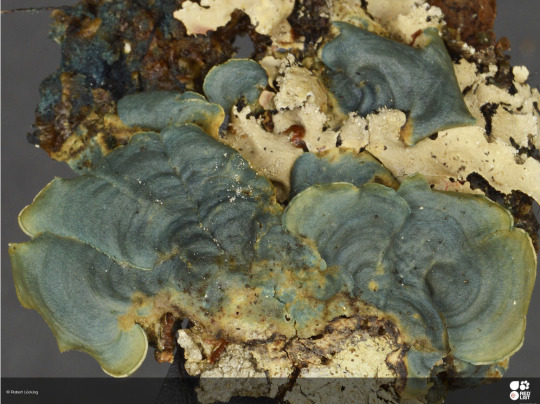
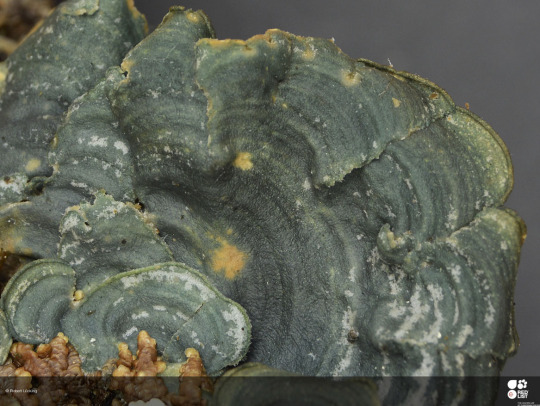
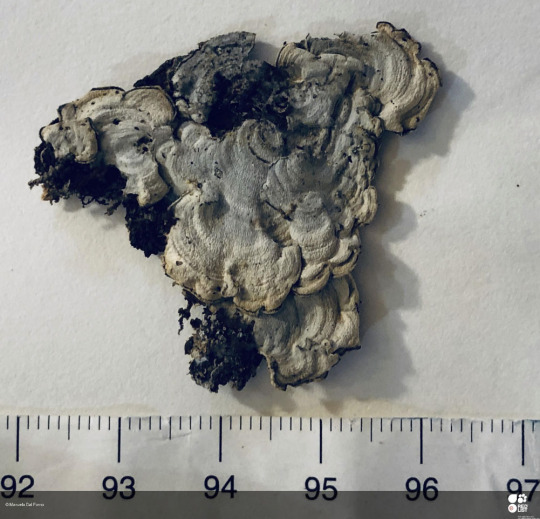
Cora timucua
I'll be honest with you--not a big fan of April Fool's day. Maybe because I am gullible, or not clever enough to think of my own pranks. So instead, I am sharing what I *hope* is an elaborate prank lichens are pulling on us--The Timucua Heart Lichen Project.
The Timucua Heart Lichen (Cora timucua) is a species of lichen endemic to Florida and the only species in the genus Cora to have inhabited the United States. It is named after the Native American people who lived in Northeast and North Central portions of what is now Florida. While historically its range included large areas of Florida, the only areas where the lichen has been reported in the second half of the 20th century are the Ocala National Forest and the O’Leno State Park. Despite its showy appearance, the species has not been collected or observed since 1985, so it is at least critically endangered or possibly even extinct. The main goal of the proposed project is to conduct an extensive and cooperative search for the species throughout its historical range and areas where the species could potentially grow, to investigate if it still exists in the wild and if so, to propose actions for its conservation. The search will engage a diverse group of people, including scientific experts, lichen enthusiasts, land managers, and the general public. Cora timucua grew primarily on shrubs in the endangered Florida sand pine scrub ecoregion, of which only 10-15% is estimated to remain intact. Thus, the majority of the search effort will be conducted in that ecoregion.
I hope dearly that this gorgeous pal is just hiding somewhere out there, and we will find it alive and well in due time.
images: source
more info: source | source | source
#lichen#lichens#lichenologist#lichenology#lichenized fungus#fungus#fungi#mycology#Cora timucua#Cora#I'm lichen it#lichen a day#daily lichen post#botany#bryology#ecology#biology#conservation biology#nature#naturalist#beautiful nature#weird nature#natural science#environmental science#life science#science#scientist#go outside#take a hike#look for lichens
128 notes
·
View notes
Photo
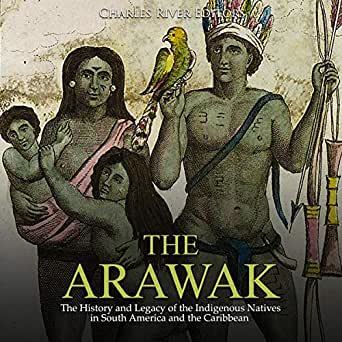
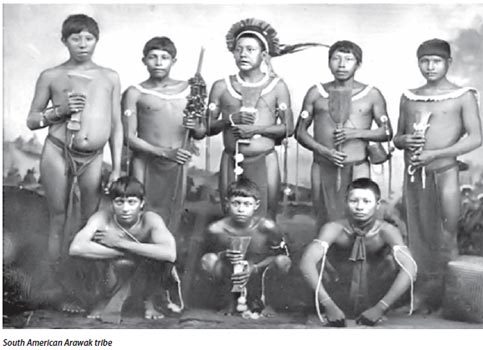


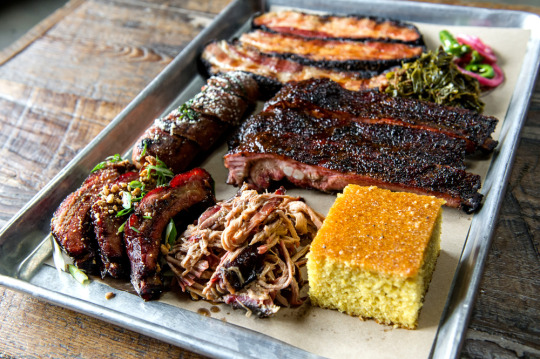
The English word "barbecue" and its cognates in other languages come from the Spanish word barbacoa. Etymologists believe this to be derived from barabicu found in the language of the Arawak people of the Caribbean and the Timucua people of Florida;it has entered some European languages in the form of the aforementioned barbacoa. The Oxford English Dictionary (OED) traces the word to Haiti and translates it as a "framework of sticks set upon posts". Gonzalo Fernández De Oviedo y Valdés, a Spanish explorer, was the first to use the word "barbecoa" in print in Spain in 1526 in the Diccionario de la Lengua Española (2nd Edition) of the Real Academia Española. After Columbus landed in the Americas in 1492, the Spaniards apparently found Taíno roasting meat over a grill consisting of a wooden framework resting on sticks above a fire. The flames and smoke rose and enveloped the meat, giving it a certain flavor.

Traditional barbacoa involves digging a hole in the ground and placing some meat—usually a whole lamb—above a pot so the juices can be used to make a broth. It is then covered with maguey leaves and coal, and set alight. The cooking process takes a few hours. Olaudah Equiano, an African abolitionist, described this method of roasting alligators among the Mosquito People (Miskito people) on his journeys to Cabo Gracias a Dios in his narrative The Interesting Narrative of the Life of Olaudah Equiano.
Linguists have suggested the word was loaned successively into Spanish, then Portuguese, French, and English. In the form barbacado the word was used in English in 1648 by the supposed Beauchamp Plantagenet in the tract A description of the province of New Albion: "the Indians in stead of salt doe barbecado or dry and smoak fish".According to the OED, the first recorded use in modern form was in 1661, in Edmund Hickeringill's Jamaica Viewed: "Some are slain, And their flesh forthwith Barbacu'd and eat";it also appears in 1672 in the writings of John Lederer following his travels in the North American southeast in 1669–70.First known use as a noun was in 1697 by the English buccaneer William Dampier. In his New Voyage Round the World, Dampier wrote, " ... and lay there all night, upon our Borbecu's, or frames of Sticks, raised about 3 foot from the Ground".
Samuel Johnson's 1756 dictionary gave the following definitions:
"To Barbecue – a term for dressing a whole hog" (attestation to Pope)
"Barbecue – a hog dressed whole"
While the standard modern English spelling of the word is barbecue, variations including barbeque and truncations such as bar-b-q or BBQ may also be found.The spelling barbeque is given in Merriam-Webster and the Oxford Dictionaries as a variant. In the southeastern United States, the word barbecue is used predominantly as a noun referring to roast pork, while in the southwestern states cuts of beef are often cooked

497 notes
·
View notes
Text

Jamilah Sabur, a piece inspired by the Timucua people, a Native American tribe that stretched form Florida to Georgia. At the Perez Museum in Miami
4 notes
·
View notes
Text
Hm so something for non BIPOC esp non-indigenous ppl to consider, maybe-
Full transparency I’m writing this bc it personally pisses me off to see ppl slandering lifeforms that have done nothing wrong and also it’s a pet peeve when ppl miss a really important point.
I have that post going around about florida condos and how one of florida’s main industries is actually turning land into condos (something to also keep in mind re: narratives related to the miami collapse- condos are not necessarily or even probably good, in their relationship to stolen land on beaches/swamps that are not made to house ppl the way we are forcing them to)
and a lot of ppl are responding to that with ‘Florida sucks/florida’s such a shithole/agreeed FL is terrible’ in the tags which is bafflingly left of my actual point in posting that
so like consider, what the hell you are saying, bc thre’s a huge subject in the middle of that you don’t seem to see when you say things like that, which is the land and the ppl who care for and about it
Florida doesn’t fucking suck. Florida is a beautiful, diverse ecosystem being exploited by false narratives and deforested because everyone sees it as ‘the place in the ads’ and not as a living, breathing place with plenty to offer aside from themeparks dedicated to franchises we desperately wish y’all would stop rewarding and the ability to turn more forest or beach into yet another condo/stripmall/disconcertingly quickly built gated community.
If your reaction to a post about how a place’s land is being exploited to fit a stupid narrative so that a few rich ppl can profit, to the point that a bunch of the buildings they put here (On stolen Seminole, Miccosukee & Timucua territory) are falling apart and killing people is to say ‘yeah that whole place is hot and terrible’ you’re truly missing the point.
It’s not Florida’s job- it’s not the Everglades’ job, it’s not the beaches and dunes’ job, it’s not the swamps’ job, it’s not the old oak forests’ job, it’s not the swamps’ job- to be cool and welcoming or to tolerate the unrealistic demands of the capitalist market. Florida doesn’t suck because it’s hot & humid- welcome to the global south it’s Like That. Florida doesn’t suck because ppl are profiting off of the idea that it should be a retiree’s playground or an idealistic getaway. The colonial expectation that an entire environ should cater to your fantasies is what sucks and it’s killing multiple locations on this planet.
There are specific people and industries that suck. And they must come to an end bc they’re killing everyhing. That’s the point.
Sidenote: The fact that Florida is mostly hugely porous and wet land that has to be filled to create foundations and frequently becomes waterlogged resulting in unstable foundations and sink holes is a well known fact of the area. So well known in general that the phrase “I’ve got some swamp land to sell you” exists to suggest one is making a poor deal.
14 notes
·
View notes